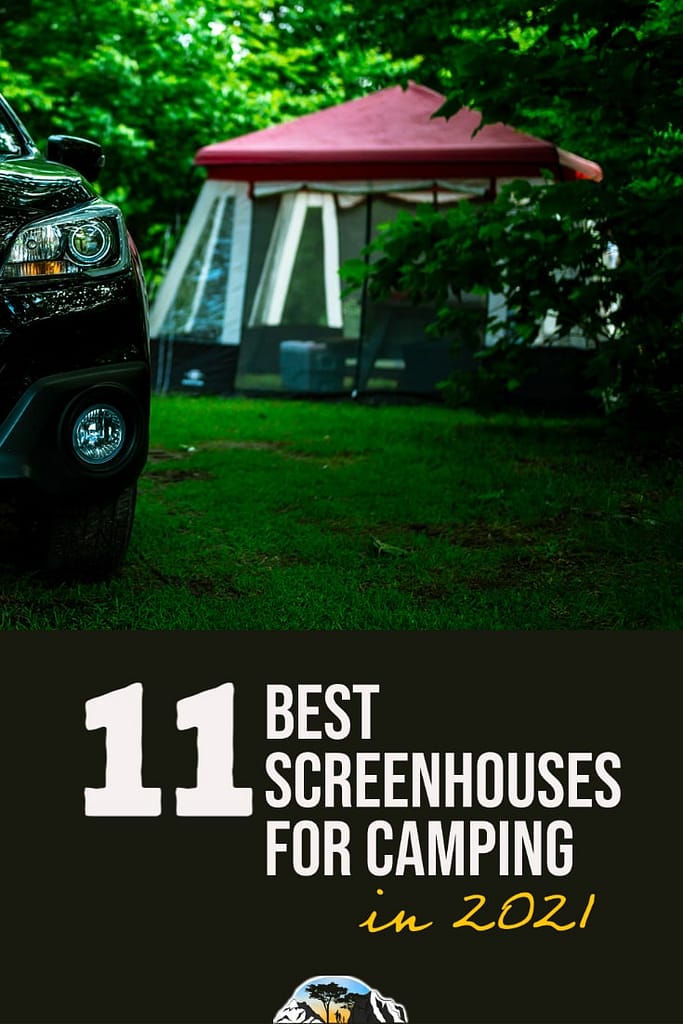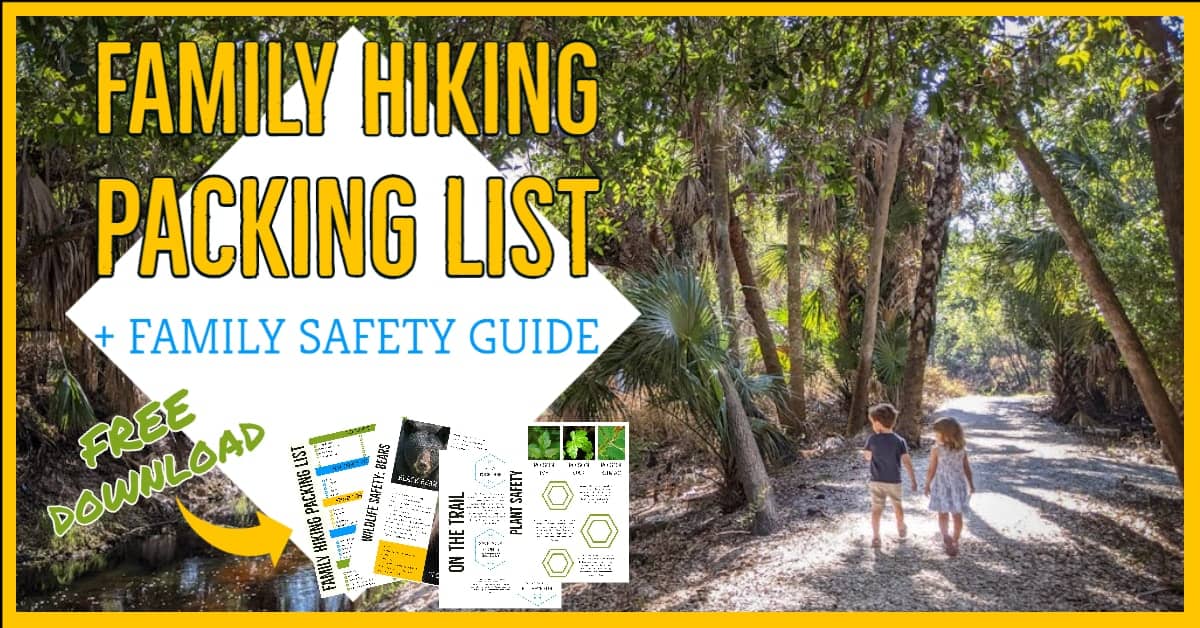If there is one thing that scares parents out of taking their kids on hikes, it is the possibility of running into dangerous wild animals. After all, we are willingly leading our children into the territory of potential predators and venomous snakes.
Yikes! That sounds even scarier when I phrase it that way; however, I want to say that dangerous wildlife encounters are very, very rare.
When they do happen, preparation is key.
My goal with this article is to give you the preparation you need to avoid a dangerous wildlife encounter, and what to do in the event of a wild animal attack when you are hiking with your kids.
This post may contain affiliate links. Visit the Disclaimer page for more information.
It starts with education
And I mean this for both you and your children. It is important that everybody is aware of the wild animals you may encounter during a hike by reading information about the park you will be visiting.
Regardless of the type of animal, there are a few wildlife safety tips you must teach your kids (and practice yourself)
- Never feed a wild animal. I don’t care if it is a squirrel or an alligator. Wildlife should not feel comfortable around you, no matter how innocent they may seem.
- Teach your kids to stay near you at all times. I hate having to be blunt, but I think this is very important: Predators target the weak. In the eyes of a predator, that means your children. The smaller they are, the closer to you they need to stay.
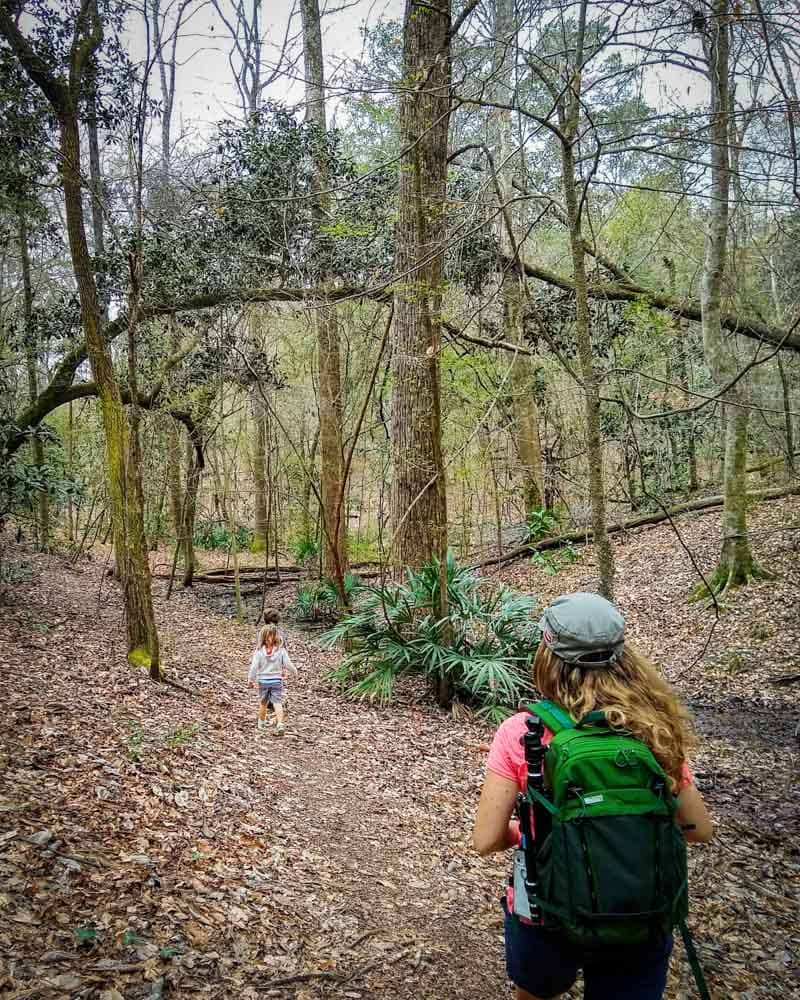
How to Avoid a Dangerous Wildlife Encounter
Most wildlife encounters occur when you “sneak up” on them. In fact, most wild animals, as long as they are not human-fed, will flee when they hear humans approaching.
This should be a comforting thought, as well as a good dangerous wildlife avoidance technique: be “loud”.
By that, I don’t mean “bring your boombox and blast your favorite heavy metal hit”. What I mean is to avoid walking silently on your own.
Of course, kids are usually pretty loud already. You still want to teach them that yelling randomly is not the way to go. One option is to sing a marching song every once in a while. This will keep your children entertained, and will also alert wildlife of your presence and give them the chance to leave.
Another important consideration is “strength in numbers”. Predators are much less likely to attack a small group of humans. Having another adult with you will drastically reduce the chances of escalating an attack.
Is having a dog good for protection?
The short answer is: No.
You may think that bringing your dog along will keep you and your kids safe, and that may be the case against other people.
But when it comes to large predators, it is a different story. Dogs may be able to terminate the attack. The problem is that dogs, unless well-trained, are also likely to upset a predator and trigger an attack in the first place.
This does not mean you should not bring Fido with you if that is what you want to do. What this means is that your dog MUST be leashed and near you at all times. It also means you should not expect or feel safer just because you have your furry companion with you.
What about firearms?
First of all, guns are not permitted in some park systems, so make sure you check on that.
As for protection, a 2012 study looking at the effectiveness of firearms against bear attacks, found that the use of firearms resulted in large numbers of dead bears. Yet, there was no significant reduction in the degree of injuries in people, whether they used their firearm or not. The type of firearm did not make a difference, either.
The researchers state not to rely on a firearm for protection unless you are proficient in its use.
What to do if you encounter a dangerous wild animal?
So, it happened. You were distracted and accidentally sneaked up on a wild animal. What do you do?
I can’t possibly cover all of the potential wildlife encounters you may have, because that will largely depend on your location. Instead, I will focus on what you need to do when you encounter a large predator, as well as include some information about snakes.
Snakes
Most snakes are harmless, and even venomous snakes don’t want anything to do with you. You are not their meal, and they do not want to waste precious energy and venom on you.
To avoid encounters, make sure you watch where you are going. Stay on the trail where the vegetation has been cleared. You can also teach your kids to always carry a walking stick to tap the ground in front of them.
If you do encounter a snake, all you need to do is stay calm and back away slowly.
I like to practice this with our kids by playing pretend in the trail. I point to a root or a stick on the trail and ask them “Imagine that is a snake, what should you do?” The answer should be to STOP walking and BACK AWAY SLOWLY.
If a snake bites…
You may not know whether the snake is venomous or not, but that does not matter: you need to go to the emergency room.
While you make your way to the ER, take a mental note of the time and the snake appearance. It is also important to reduce movement. Keeping blood flow low will reduce the spread of the venom. If it was your child, carry them so that they do not move as much. You can give Tylenol to reduce pain and inflammation.
It is just as important to know what you should NOT do:
- DO NOT apply a tourniquet
- DO NOT try to suck up the venom
- DO NOT give ibuprofen or aspirin
Related: Best Hiking Snacks for Families
Bears
Not all bears are created equal. Most people assume that you treat all bears the same, when in reality that is a bad idea.
There are three main species of bears that you may encounter in North America: brown bears, black bears, and polar bears. I will focus this portion on black bears and brown bears since those are the ones you are most likely to encounter.
Black bears
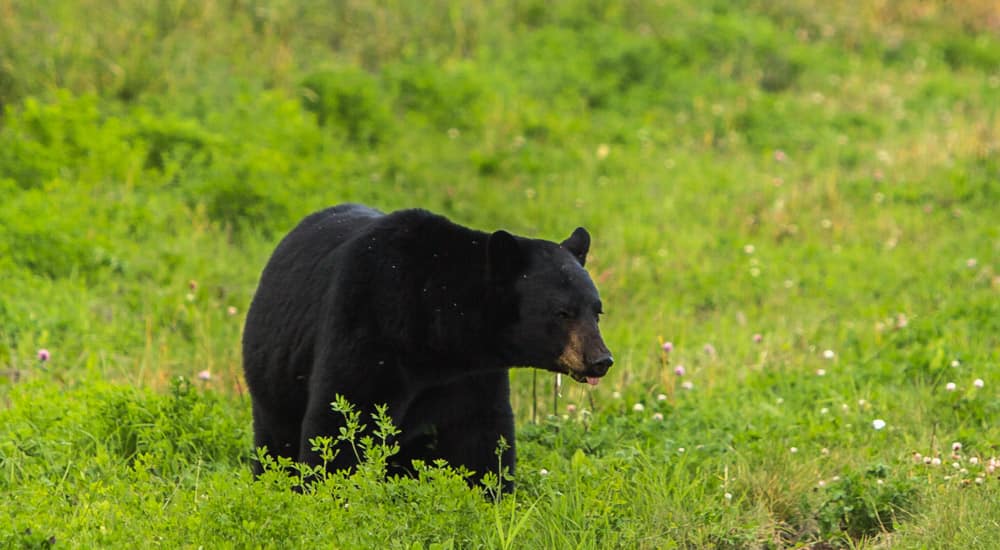
These are the most common. Their range covers most of the North American continent, although you typically won’t find them in wide-open areas or the great plains.
If you encounter a black bear on the trail, have your kids come to you slowly. Give it as much room as possible. Speak in loud, but calm tones and back away slowly. Do not run to avoid triggering their chasing instinct.
If the bear acts defensively, it is likely a female protecting her cubs or a food source. Keep your bear spray ready, speak loud but calmly, and again, back away slowly. It is important you de-escalate the situation and show the bear you are not a threat.
By the way, a bear standing on its hind legs is not necessarily a sign of aggression. They may simply be trying to get a better look at the situation. All the more reason to show them that you are not a threat and that you are leaving.
If a black bear attacks…
On very rare occasions, the black bear may charge. They may do this because they are curious, or a young adult may want to test its dominance.
**I will say this now: DO NOT PLAY DEAD. If a black bear attacks you, they intend to kill you. Playing dead will only make it easy for them**
DO NOT RUN OR CLIMB. Black bears are faster than you. They are also good climbers, so getting up a tree won’t help you.
The most effective way to stop the attack is by using a bear spray. If that does not work, FIGHT BACK. be ready to kick, punch, even use your walking stick. Target the face, eyes, and nose.
Brown Bears
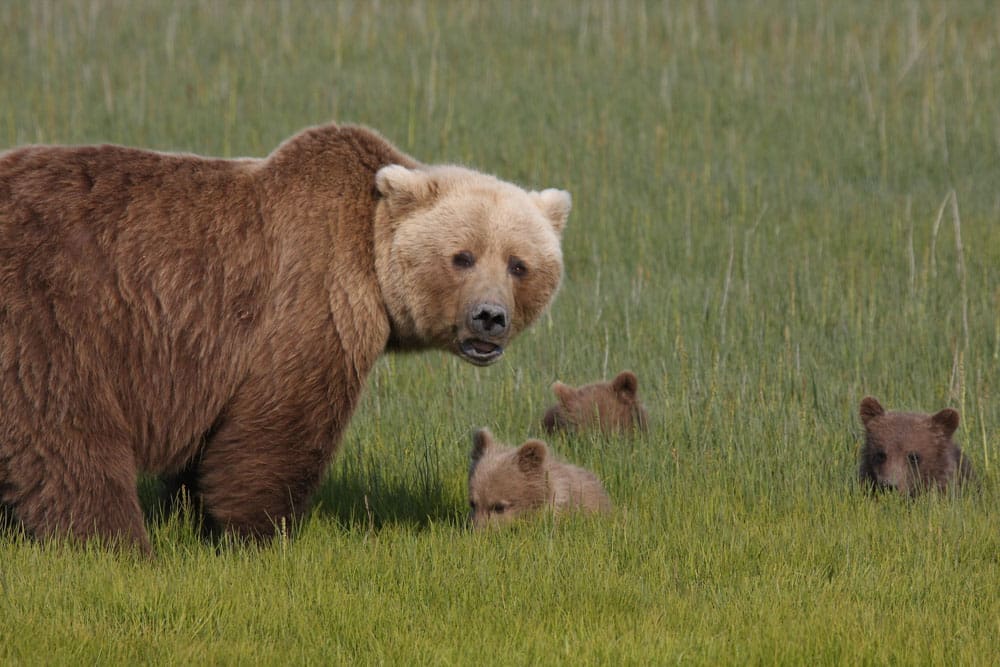
These much larger bears are typically found in northwestern states, such as Washing, Idaho, Wyoming, and Montana, extending North into western Canada and Alaska.
To avoid brown bears, be loud as you walk and make sure your kids are always close to you.
If you encounter a brown bear, follow the same suggestions as with black bears. Stay calm, gather your children around (pick them up if they’re small), and keep your bear spray at the ready. Keep your eyes on the bear at all times, and back away slowly.
If a brown bear attacks…
If a brown bear still charges, you cannot outrun it. Be ready to use your bear spray (more on that later).
If the bear spray does not deter the attack, “playing dead” with a defensive brown bear is the best bet at this point.
Brown bears that act out of defense, such as a mother protecting her cubs, just want to make sure you are no longer a threat. Lay on your stomach and cross your hands behind your neck. Once the bear walks away, stay down for a LONG time, even if it is 30 minutes or an hour.
What should the kids do? Honestly, I have not found the answer to this. I keep debating whether I would lay both kids right next to me and protect them as best as I can with my body. Let’s just say that at this point, I rather carry multiple bear spray cans…
This, by the way, is why it is a good idea to have a backpack on you and your older children. As you lay down on your stomach, your backpack may offer some protection.
**This is a good time to repeat this: DO NOT PLAY DEAD WITH A BLACK BEAR.**
Very rarely, a brown bear attack will be predatory. In other words, the bear intends to eat you. In a predatory attack, the bear shows interest and continues to approach without any signs of distress. Basically, it is eyeing a potential meal, not assessing a potential threat.
If you realize the attack is predatory in nature, playing dead won’t work. Stand your ground and be ready to fight back. Make your self look at big as possible by waving your arms and yelling at the bear in a loud, firm voice. Use bear spray, branches, rocks, walking sticks, or anything you may have and target the eyes and the nose.
Some Bear Encounter Stats
Even as I write this I get a little agitated. It is scary to think that something like that could happen, but let me give you some stats to put your mind at ease.
A Nature study examined the data from 664 brown bear attacks during a period of 15 years across the globe. Their main findings were:
- Only 183 of those attacks occurred in North America, averaging 11 attacks per year.
- Most of the attacks occurred with individuals that were alone.
- Most attacks were defensive encounters with females with cubs.
- In North America, only six out of the 183 brown bear attacks were considered predatory. That just over 3% of brown bear attacks in North America.
In other words, it is HIGHLY UNLIKELY that you will have to deal with a bear attack. Yet, knowledge and preparation is the best way to stay safe on the trail.
Related: 16 Great Gifts for Outdoorsy Kids
Coyotes
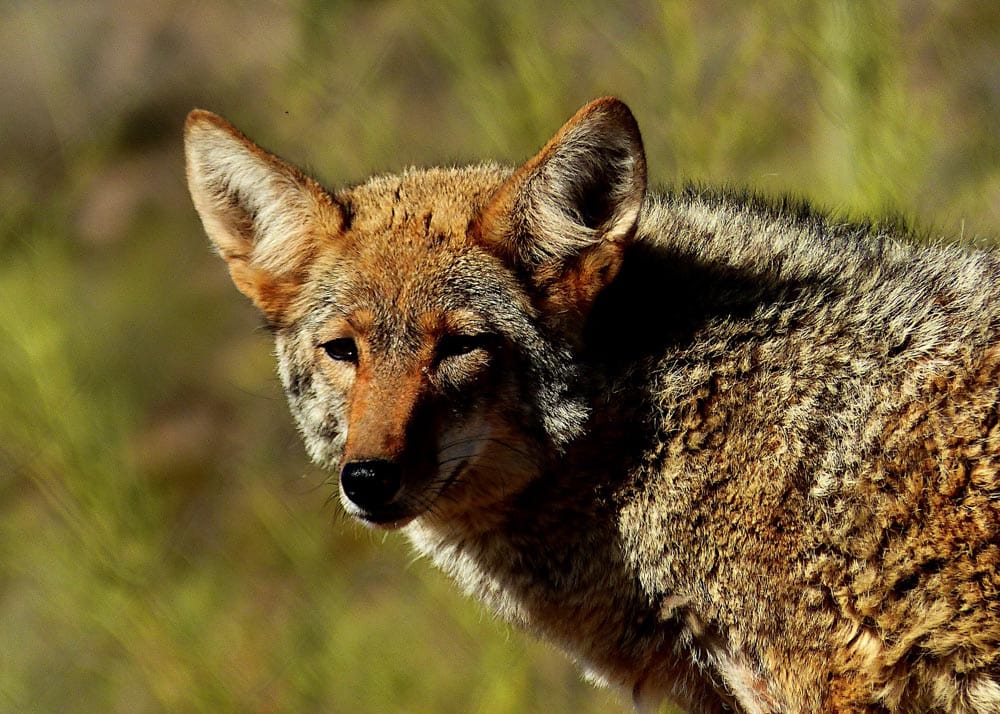
Coyotes are found in most of North America, in both suburban and wild areas. Coyotes are generally timid and won’t approach you. Only rarely do they represent a threat.
In case you do encounter coyotes on the trail, these are some of the measures to take:
- Keep your children close to you and pick up the smallest children (I keep saying this, don’t I)
- Watch your surroundings. Coyotes live in packs, and they’re usually not alone.
- Wave your arms and yell loudly to appear big.
- Make loud noises with whistles, air horns, or even a “coyote shaker”
- Throw rocks or large sticks.
- If the coyote attacks, FIGHT, once again targeting eyes and nose.
Panthers
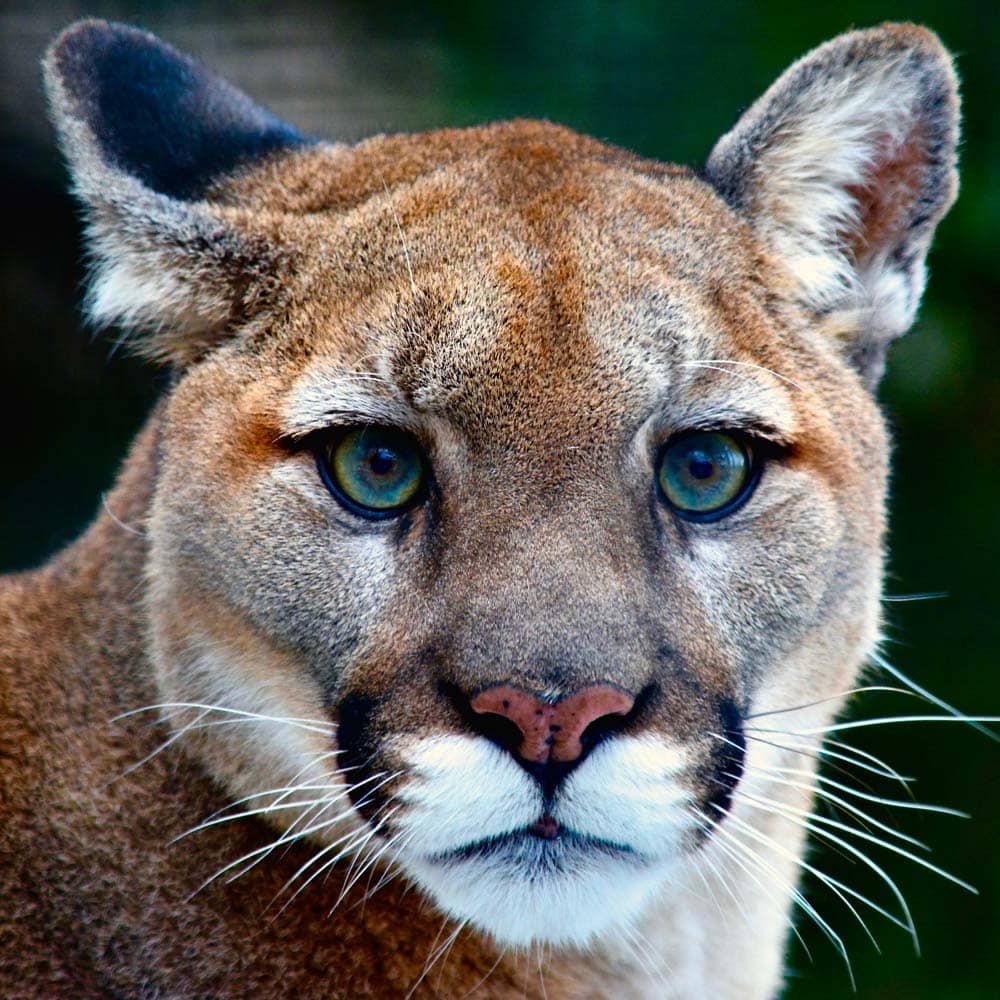
These large cats live in a large range of habitats, from the Florida Swamps, to Canada’s Yukon, to the Costa Rican rainforest. They get different names depending on the location, including panther, puma, cougar, and mountain lion, just to name a few. However, they all refer to the same species: Puma concolor.
I will continue to refer to them as panthers for this section.
Most panthers will avoid confrontation, so one of the most important things to do is to give them space. They will likely go away.
If you do encounter one, just like with any other predator we have covered so far, keep your kids closer to you.
Stand your ground and make eye contact. Do not threaten, but make it known that you are big. Use a loud firm voice and wave your arms to appear larger.
Whatever you do, do no run or give your back to the panther. You will trigger their chasing instinct and you will NOT escape.
If the cat continues to approach or charge, use the bear spray. Be ready to fight back targeting the sensible parts of the face.
Your best, last-minute defense
You may have noticed I spoke about bear spray a lot. There is a reason for it.
In a small study looking at 83 bear spray incidents in Alaska, 98% of people that used a bear spray in close encounters were uninjured. When bear-inflicted injuries did occur, they were minor and required no hospitalization.
Keep in mind that this was a small study, but more and more experts are recommending bear spray as the most effective defense in the case of a dangerous charging bear.
While bear cans are made for bears, they can also help deter coyotes and panthers.
Of course, having a bear spray in your backpack is of no use to you if you do not know how to use it. Make sure you follow these short guidelines:
- Consider getting a practice bear spray can to get familiar with it, since you do not want to wait until you have a charging bear to figure out how it works.
- Keep your bear spray canister handy in a holster, with the safety on.
- If a bear approaches despite your efforts to keep it away, pull your spray out of the holster, and remove the safety.
- If it’s windy, try to adjust for the wind direction. You do not the spray to get to you.
- Keep your children behind you and hold the can with one hand on the trigger, the other one to stabilize the can.
- When the bear is within 10 yards, spray the contents of the can on the bear’s face. Each can will have about 5 seconds worth of content. Use them wisely. Again, practice at home with the inert practice canister.
- Once the bear retreats, you need to do the same. Walk backward or sideways, picking up the pace, but always keeping an eye on the bear.
Let me be clear: a bear spray is your LAST RESORT. You should first avoid a dangerous wildlife encounter l encounter by following the guidelines provided earlier.
Take home message
The overall message that I want to convey is:
- Give wild animals sample space
- Deescalate a confrontation
- Be ready to fight back
I am aware that this post may cause alarm, but that is certainly not the intention. At the same time, I do not want to downplay the importance of the situation.
My goal is to educate you as best as I can based on my own knowledge as a biologist and my experience as an outdoorsy mother.
Now go out and enjoy nature with your kids!
PIN FOR LATER!
